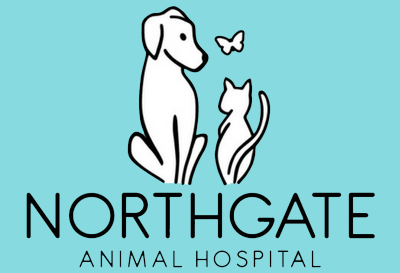Paper shredders – a new danger to both dogs and cats. Most paper shredders have an on/off and self feed buttons. Cats go everywhere and have been known to walk on the top of the shredder and get a foot or hair caught in the folds. The motor can also be warm, making laying on the shredder an attractive spot for some cats. There have also been reported traumas in dogs that have gotten their tongues caught in the shredder. Keep the shredder turned OFF when not in use and especially don’t keep the auto-feed function turned on. It is a good habit to always unplug shredders when not in use, especially if they do not have an on/off button. Keep shredders under a desk where cats are unlikely to walk or lay.
Ethylene glycol – also known as “antifreeze” is commonly kept substance in many homes and garages. It can leak on floors and driveways or may be stored inappropriately allowing pet exposure. This highly dangerous substance is sweet and appealing to pets. As little as one teaspoon can kill a small pet. It is treatable if identified, treated early and aggressively.
Doors – doors can be dangerous for a couple reasons. The first is that doors that are heavy and shut fast. This can inadvertently crush a small or young pet or cause trauma to their paws or tail. Secondly, the door is the opening to the outside, which may be an unprotected and uncontrolled environment. Some pets may run out an open door without a collar or identification and suffer trauma from being hit by an automobile, attacks by other animals or become exposed to dangerous toxins.
Recliners – Adult pets but especially puppies and kittens like to hide and run under recliners. This can be dangerous when someone sits or begins to rock as pets can become crushed. Take special care in checking the location of your pet before sitting or reclining.
Potpourri – Liquid potpourri is highly caustic and tasty to some pets, especially cats. They can cause severe mouth and esophageal burns that can be life threatening if left untreated. Some cats won’t eat with these burns therefore a feeding tube may become necessary.
Bones – dogs love bones but they are not always good for them. Bones can get caught in their mouths and/or cause constipation in some dogs. Some bones like chicken or turkey bones splinter easily and may cause a life-threatening perforation of the intestine.
Human foods and substances – caffeine products (e.g. chocolate), nicotine (e.g. cigarettes or cigarette patches) can cause problems. Rich, fatty foods can cause inflammation of the pancreas.
Trashcans – are full of dangers. Dogs and cats both can pull bones, ribbons, string, dental floss and other potentially dangerous materials from the trash. Keep trashcans covered and out of reach of pets.
Your medicine cabinet – medications that are safe for you are not necessarily safe for your pet. It is not uncommon to see pets in emergency clinics as victims of a well intentioned and poorly informed pet owners. If your pet has a health problem, discuss all medications and dosing with your veterinarian before giving anything to your pet. Especially toxic are common pain and allergy medications (e.g. Claritin®, Tylenol®, and aspirin).
Unsecured medications – Pets are innately curious and may be interested in human medications or inhalers. These can be very dangerous. Make sure you keep all medications out of the reach of pets and off tables that can be knocked over.
Glues and cleaners – Dogs especially like to chew and lick on things. Many cleaners are caustic and can cause severe oral and esophageal burns. Some of the new glues such as Gorilla® Glue, expand in the stomach causing severe obstructions that require surgery. Keep all cleaners and glues away from pets.
Laundry items – Dogs are notorious for seeking out interesting smells that may come from your dirty clothes hamper. Socks, pantyhose and underwear are especially dangerous and eating these objects can cause a life-threatening obstruction that may require surgery. Keep laundry items secure and out of reach from curious pets.
Hanging and choking – Cat collars can get caught easily on all types of household objects. It is important to only use a ‘break-away’ or safety collar on cats. This type of collar will disengage if caught, leaving the cat to escape injury. Dogs should always have their collars and tags removed before placing unattended in a crate to avoid hanging or choking injuries.
Electrical wires – Keep all electrical wires secured and out of reach of pets. Some cats, kittens and puppies may be tempted to chew on dangling wires and run the risk of injury. Electrical injury can cause burns within the mouth, lips or tongue. More serious injuries can result in seizures, difficulty breathing or cardiac arrest. If you find tooth marks on any electrical cord, unplug the cord and have it replaced.
Toys – Any toy that your pet is able to chew, swallow or destroy poses a risk of injury. Supervise use of all toys and inspect regularly for safety to assess any damage. Throw away any toy that has become unraveled or shows signs of wear. Be sure to keep any children’s toys off limits to pets.
By: Dr. Debra Primovic






